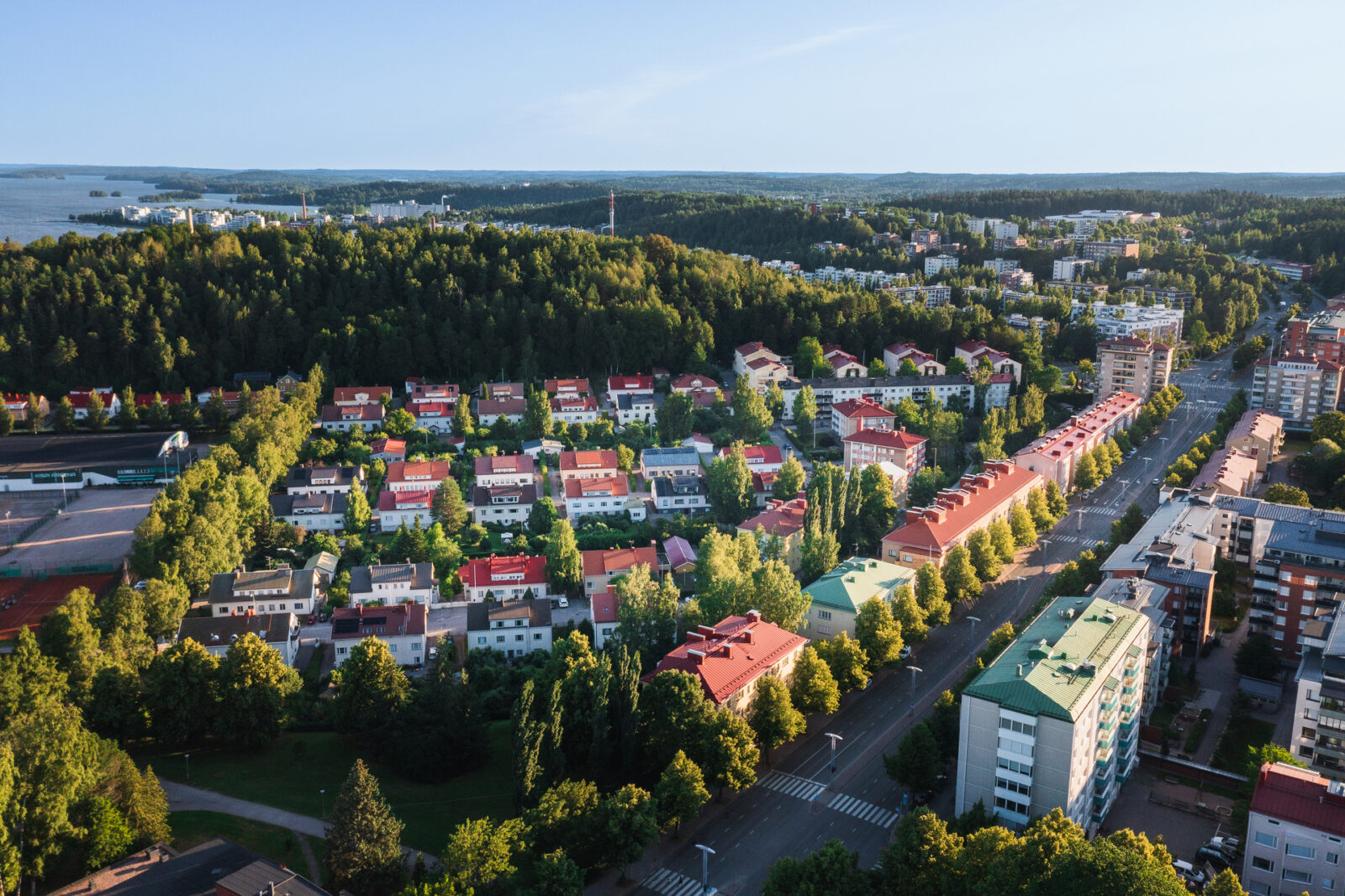The City of Lahti recently took part in a nationwide project called Kulma, which measures the carbon footprint of residents living in different local authorities across the country. The latest figures represent residents’ consumption-based greenhouse gas emissions in 2022. A total of nineteen other local authorities also took part in the project.
The residents of Lahti had the lowest emissions in all the measured areas of consumption with the exception of food; Lahti came second in this category. The residents of Lahti have been especially successful in lowering their energy consumption and construction-related emissions.
‘It is great to see Lahti in the top position in this comparison. The latest figures are testament to the success of the nationwide energy-saving efforts of last autumn and winter. The energy crisis has, however, meant that emissions from individually heated homes are up slightly’, says the City of Lahti’s Environmental Coordinator Laura Matkala.
‘The completion of the Lahti Southern Ring Road caused a spike in emissions from infrastructure construction in 2020, and the latest figures are considerably lower, as there have been no similar major projects since then. The fact that even a single large-scale project such as the Lahti Southern Ring Road can have such a big impact on annual emissions highlights the importance of measuring carbon footprint at regular intervals’, Matkala says.
Huge potential for further cuts to consumption-based emissions
This was the second time that the carbon footprint of Lahti’s residents has been measured. Consumption-based greenhouse gas emissions in Lahti amounted to 7.17 tonnes of carbon dioxide equivalent per capita in 2022, when the 2020 figure was 7.83 tCO2eq.
A carbon dioxide equivalent (CO2eq) is a measure of the global-warming potential of emissions from various greenhouse gases. CO2 equivalents are commonly expressed in metric units such as kilograms or tonnes. Consumption-based emissions per capita are measured in tonnes of CO2 equivalent (tCO2eq). City-wide emissions are typically measured in kilotonnes (ktCO2eq) and nationwide emissions in millions of tonnes (MtCO2eq).
Consumption-based emissions include emissions from energy consumption, construction, transport, food and goods and services. The computation model used in the local authority comparison has been revised by incorporating emissions from the construction of new roads, streets and bridges into the construction category, making the results even more accurate. In addition, the model now also factors in the effect of second homes and seasonal residents on consumption-based emissions. In many of the surveyed local authorities, the biggest sources of consumption-based emissions were food and energy consumption.
There is huge potential to reduce these emissions further, but realising the potential requires a change in behaviours. Local authorities can support their residents in making climate-friendly choices by investing in public transport, creating better opportunities for walking and cycling, promoting sustainable diets and providing a low-emission district heating system. Awareness raising campaigns and public relations in general can also make a big difference.
Project team
The project was coordinated by Sitowise Oy in collaboration with the Natural Resources Institute Finland. The computation model was built in close cooperation with a network of experts consisting of representatives of pioneering local authorities and specialists from a number of expert organisations. Emissions from food consumption were calculated with the help of the S Group, a nationwide retailing cooperative.
Enquiries
Environmental Coordinator Laura Matkala
Tel. +358 (0)44 483 1684, laura.matkala@lahti.fi
